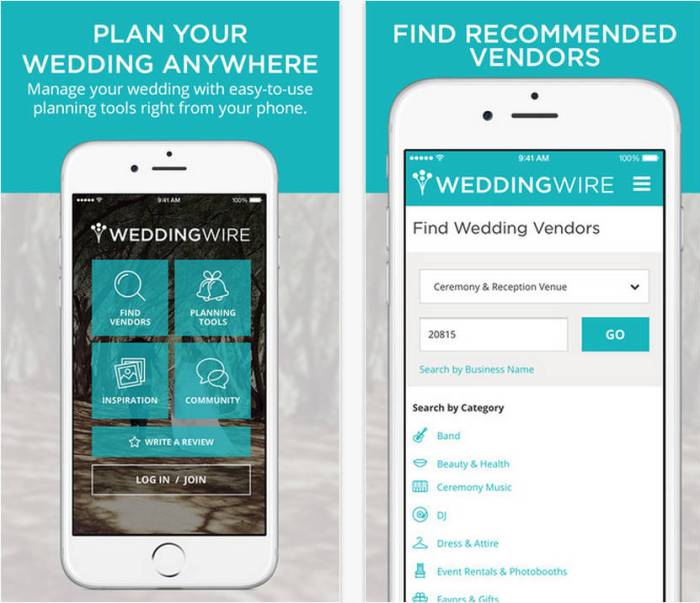Wedding Planning App Your Ultimate Guide
Tired of the wedding planning chaos? Wedding planning apps are revolutionizing the way couples organize their big day. From budgeting to vendor management, these tools offer a streamlined, digital approach to what can be a daunting process. This guide delves deep into the world of wedding planning apps, exploring their evolution, features, and the impact they’re having on the modern wedding industry.
We’ll cover everything from choosing the right app to understanding the crucial user experience elements, and even analyze the future trends shaping this exciting market segment. Get ready to discover how wedding planning apps can transform your experience, saving you time, stress, and potentially even money.
Introduction to Wedding Planning Apps
Wedding planning can be a daunting task, often involving countless decisions, vendor coordination, and meticulous budgeting. Traditional methods, relying on spreadsheets, phone calls, and emails, often lead to frustration and missed deadlines. Modern wedding planning apps offer a streamlined, digital approach, revolutionizing the entire process. This article explores the evolution of wedding planning, the key features of these apps, and their impact on the industry.
Definition and Evolution
Wedding planning apps are digital platforms designed to manage all aspects of wedding planning, from budgeting and vendor communication to guest management and timeline tracking. They leverage technology to streamline the process, providing a centralized hub for all relevant information.
The evolution of wedding planning mirrors the broader shift towards digital solutions. Previously, couples relied on physical albums, paper invitations, and countless phone calls. Today, apps allow for instantaneous communication, centralized data storage, and real-time updates, significantly reducing the workload and improving the overall planning experience.
Key Features
- Budgeting: Allows couples to track expenses, set budgets, and monitor spending against their goals.
- Vendor Management: Facilitates communication, scheduling, and contract management with vendors.
- Guest Management: Helps manage guest lists, RSVPs, and seating arrangements.
- Timeline Tracking: Enables couples to stay organized by creating and managing event timelines and milestones.
- Document Storage: Provides a secure space for storing important documents, contracts, and other relevant information.
- Communication Tools: Facilitates communication with vendors, family, and friends.
Examples of Popular Apps

Several popular wedding planning apps cater to different needs and preferences. Examples include Zola, The Knot, and WeddingWire, each with unique features and functionalities.
Comparison of Popular Apps
| App Name | Budgeting | Guest Management | Vendor Management |
|---|---|---|---|
| Zola | Detailed budgeting tools, expense tracking, and goal setting. | Guest list management, RSVP tracking, and personalized communication. | Vendor search, communication, and contract management. |
| The Knot | Basic budgeting features, but more focused on vendor search and communication. | Guest list management, RSVP tracking, and basic seating charts. | Extensive vendor directory and communication tools. |
| WeddingWire | Limited budgeting tools, but strong vendor search and matching capabilities. | Guest list management, RSVP tracking, and basic communication. | Strong vendor directory and extensive communication features. |
User Experience and Features
A user-friendly interface is crucial for a wedding planning app. Easy navigation, clear organization, and intuitive controls are essential for a positive experience. Different features contribute to the overall user experience, from smooth budgeting to seamless vendor communication.
User Interface Design
A well-designed interface should prioritize simplicity and ease of use. Visual clarity, intuitive navigation, and clear labeling of features are key aspects of a user-friendly experience. Consistent design elements across different sections of the app enhance usability.
Importance of Intuitive Navigation
Intuitive navigation is critical for users to quickly find the information they need. Clear menus, well-organized sections, and logical flow contribute to a smoother user experience. Users should be able to easily navigate between different features and tasks.
Different Features and User Experience
Different features within a wedding planning app impact the overall user experience. A smooth budgeting system, efficient vendor communication, and comprehensive guest management contribute to a positive experience. The user experience can vary depending on the specific app, and features like customizability, accessibility, and personalization are important factors.
Crucial Features for a Positive User Experience
- Seamless Integration: Features should integrate seamlessly to avoid data silos.
- Customizable Templates: Allowing users to tailor aspects of the app to their specific needs.
- Real-time Updates: Providing users with instant access to the latest information.
- Mobile Accessibility: Ensuring the app is easily accessible and functional on mobile devices.
User Roles and Access Levels
| User Role | Access Levels | Key Features |
|---|---|---|
| Couple | Full access to all features, including budgeting, vendor management, and guest list management. | Budgeting, vendor communication, guest management, timeline tracking. |
| Family Member | Limited access based on permissions granted by the couple. | Guest list access, communication, and event updates. |
| Vendors | Access to specific features relevant to their role (e.g., scheduling, invoices). | Scheduling, communication, invoice management. |
